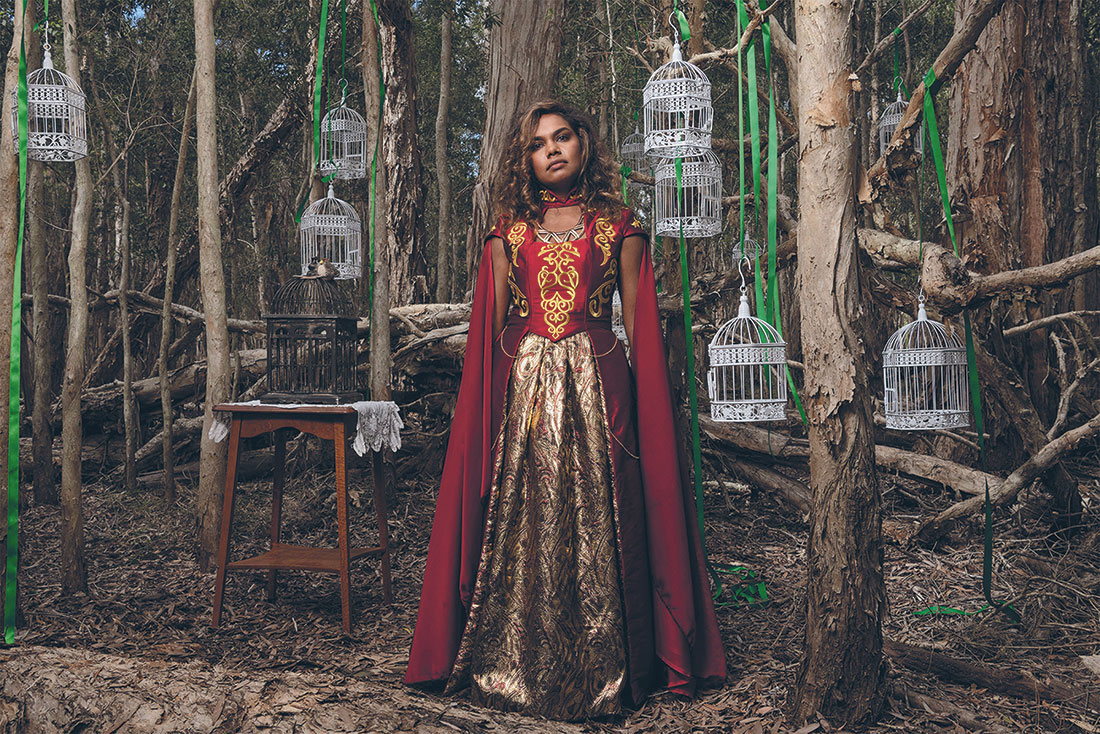
Stories in Another’s Language at Noosa Regional Gallery
Michael Brennan explores the role art can play in catching and cataloguing important moments in time as part of an upcoming exhibition.
Main Image: Fiona Foley, The Magna Carta Tree #2, 2021, 80 x 120cm, edition of 8. Photo – Mick Richards
“Photo! or it didn’t happen.” This common catchcry of social media implies there’s some credibility issues with a particular poster’s claims:
‘I met The Kid Laroi at a bar last night and we hung out drinking for hours.’ ‘A kookaburra swooped down and stole my phone, sending predictive texts to my ex-girlfriend from a nearby gum tree for 45 minutes.’ ‘I booked an Uber last night and was picked up by this guy driving a Rolls Royce decked out in black, pink and gold camouflage paint.’ (see footnote).
But if we think of the mis-under- and un-reported incidents of callous inhumanity experienced by this country’s first people, then the power and rise of contemporary First Nations’ photography places a different kind of emphasis on this meme-worthy statement.
Of course, there were no cameras available to the Aboriginal people who were abused and enslaved, or worse, by those coming to claim Australia as theirs.
But artists such as Fiona Foley and Michael Cook, among others, cleverly and cuttingly redress these cruel deceits through reexamination and recreation under the trained eye of their cameras’ lenses.
Both Foley and Cook are exhibiting recent bodies of work at Noosa Regional Gallery this winter as part of the Noosa Alive! artistic program. Foley’s exhibition, Nguthuru-Nur, shot on Badtjala Country, brings together a series of photographic works under the title, The Magna Carta Tree.
It examines a mangrove tree named
by cattle farmer, Lindsay Titmarsh, on whose property, Tandora, the tree has been living for over 700 years; about the same amount of time since the infamous charter after which the tree was named came into being, driving much of Western law ever since.
Foley draws our attention to the dark irony of its 39th Clause – ‘No free man shall be seized or imprisoned, or stripped of his rights or possessions, or outlawed or exiled, or deprived of his standing in any other way, nor will we proceed with force against him, or send others to do so, except by the lawful judgement of his equals or by the law of the land. To no one will we sell, to no one deny or delay right or justice.’
Adopting the French, Natures Mortes, or ‘dead nature’ as it translates in English, for the title of his series of works, Cook similarly choreographs a series of tableaus before his camera that examine the devastating impact of colonisation on Australia’s First Nations peoples, and the repercussions of environmental degradation that have come with it.
Exquisitely lit to reveal opulent arrangements of animals, plants and objects of indulgence, these photographic offerings echo the aesthetic of Dutch Old Master paintings, framing the excesses that colonisation brought with it as an instrument of attack on both environment and culture.



